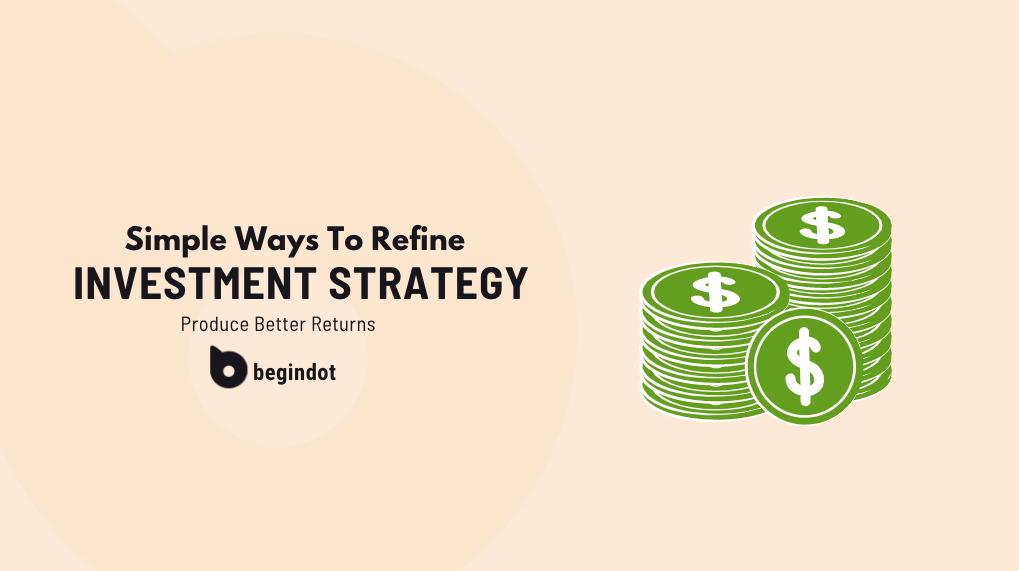Many people think of investing as a one-time thing – you decide what to invest in, you put your money there and then you leave it.
For a lot of people that is exactly what happens but for the more active investor, investment is a process of refinement, adaptation and flexibility.
In this article, we’re looking at ways that investors who want to be more active with their money can refine their investment strategy to produce even better returns.
1. Understand your goals and yourself
When most people start to invest they do so with little thought to the reasons and their own wants and needs.
This is fine if you are simply putting a little aside in a bank account for a rainy day, but as the pot grows and the investor becomes more active it is important to understand why you are investing.
Putting money aside for a rainy day is as good a reason as any but if you have other ambitions then now is the time to start to build them into your strategy.
For example, if you want to provide for your retirement you may use a different vehicle from someone who is simply trying to build up enough cash for a house deposit.
You also need to understand your mentality in terms of the type of investor you are. Check out the BB&K model and decide, are you an individualist, a guardian or a celebrity?
Once you understand what you want to achieve and your personality type then you can start to refine your investment strategy to suit.
2. Diversify, diversify and diversify
Once our budding investor decides that they want to do something with the stack of cash building up in their bank account, they may be tempted to put it all into one area where they have heard that there is good money to be made.
This is a bad idea for two reasons.
The first is that you need to make sure you diversify your types of investments into short, medium and long-term types.
Short term so that you have cash you can call on if your car breaks down, medium to make you some money for specific goals and long for your retirement and wealth building needs.
Short term needs to sit somewhere that may not make any money but where it will be instantly accessible.
For your medium and long term investments then it is important to diversify the type of thing that you put money into.
You can diversify based on sector with some money in stocks, some in gold and some in property. Or you can diversify by risk rating with some in safe government bonds moving right the way through to crypto and new start companies.
The important thing is to make sure that all of those precious eggs aren’t sitting in one basket. So for instance it is absolutely fine to have money in crypto – just not all of your money!
3. Develop your research resources
A good investment strategy is based on knowledge so the canny investor knows that before they plump for an investment, they must thoroughly research what they are getting into.
Once you know what sectors you are looking at then it is important to build up a selection of resources that allow you to understand the latest state of play and to educate yourself about the sector.
Try and develop a wide range of different sources of information from the traditional like the FT to the more outspoken commentators you can find on the web. The important thing is that you have a wide range of views on any subject so that you can develop your own investment appraisal.
4. Learn to read stock charts
For any investment type, it is important to understand actual performance and put that into context.
One of the most useful skills is to be able to read stock charts because most types of investment use a version of these.
There’s an important point here, understanding stock charts is about identifying good investments and assessing how well you have done but it is also about reducing your risk.
Often you will find unscrupulous sellers use selectively modified charts to show you what a wonderful opportunity they are offering when the reality is very different. Understanding how to read them and how they can be manipulated means that when someone tries to con you, you’ll be one step ahead.
5. Build in flexibility and use it
One of the most important aspects for the active investor is that of flexibility and agility.
What is a perfectly good investment vehicle today may not remain so in the future so being adaptable and prepared to change course is always a sensible move.
A really good example is the tax treatment of different investment types and the political aims behind it.
Suppose a government wants to encourage housebuilding and gives incentives for people to lend to house builders or buy property directly. It would make sense that a smart investor looks at ways to capitalise on this.
But then imagine that the political leadership changes and all of a sudden the incentives are removed and there’s extra taxation for people that own more than one home. Clearly being able to pivot out of the property to something more tax-efficient would make sense.
Building flexibility in your portfolio and making sure that when circumstances change, you are prepared to change with them will ensure that your returns are market-beating.
6. Wrapping up – Investment is all about developing
The best investors never stop learning and it doesn’t matter where you are in your investment career, more information is never a bad thing.
In the early days, you may choose to go for lower risk and return but as your knowledge grows that may change and you could become more adventurous.
The key to becoming a successful investor is to always keep developing and modifying your strategy, testing and refining until you hit on the right formula for you.










